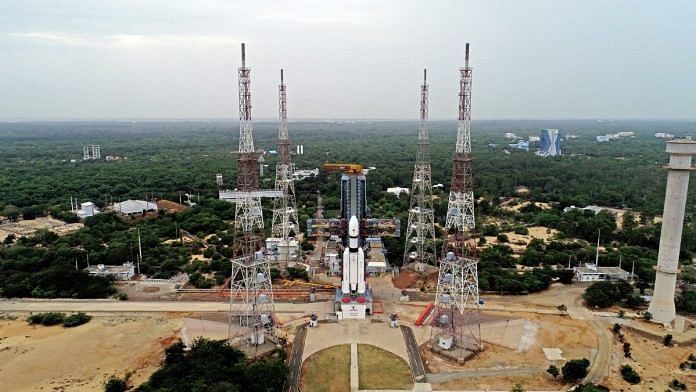New Delhi: A group of scientists from the Indian Space Research Organisation (ISRO) offered prayers at Andhra Pradesh’s Tirupati Venkatachalapathy Temple on Thursday, a day ahead of the launch of Chandrayaan-3 which will attempt to put a rover on the moon’s surface.
The scientists had taken with them a miniature model of the spacecraft which will blast off from India’s main spaceport Sriharikota in Andhra Pradesh at 2.35 pm on 14 July.
#WATCH | Andhra Pradesh | A team of ISRO scientists team arrive at Tirupati Venkatachalapathy Temple, with a miniature model of Chandrayaan-3 to offer prayers.
Chandrayaan-3 will be launched on July 14, at 2:35 pm IST from Satish Dhawan Space Centre, Sriharikota, ISRO had… pic.twitter.com/2ZRefjrzA5
— ANI (@ANI) July 13, 2023
ISRO Chairman S. Somanath was seen praying at the Sri Chengalamma Temple in Tirupati, where he told reporters: “Chandrayaan-3 will start its journey tomorrow. We are hoping that everything goes right and it lands on the moon on 23 August.”
The 43.5 metre LVM3 launch rocket will push the spacecraft into an elliptical Earth orbit before it moves toward the moon for a scheduled landing around 23 August.
If everything goes to plan, India will become only the fourth country in the world to soft-land a rover on the moon’s surface after the US, China and former Soviet Russia.
Chandrayaan, which means “moon vehicle” in Sanskrit, includes a 2-metre tall lander designed to deploy the rover near the lunar south pole. It is expected to remain functional for two weeks – which is how long the sun shines at a time in the area.
ISRO’s Chandrayaan-2 mission in 2019 successfully deployed the orbiter but its lander and rover were destroyed in a crash near where the Chandrayan-3 will attempt a touchdown.
Chairman S. Somanath said earlier this week that Chandrayaan-2’s problem was its limited ability to “handle parameter variation or dispersion”.
Somanath added: “What have we done this time? We have expanded on that. We have looked at what can go wrong… Instead of a success-based design, we are doing a failure-based design in Chandrayaan-3. What all can fail, and how to protect it? This is the approach we have taken.”
Of the many things ISRO has done is to expand the landing area by half a kilometer by half a kilometer. “To four by 2.5 kilometre… Four kilometer along the track and 2.5 kilometre width. It can land anywhere,” Somanath said.
A successful landing of the spacecraft – built on a budget of under $75 million – will signal India’s entry as a power in space exploration and commerce at a time the central government is encouraging investment in private space launches and satellite-based businesses.
Last June, Prime Minister Narendra Modi launched Indian National Space Promotion and Authorisation Centre (IN-SPACe) — a single-window, independent, nodal agency that functions as an autonomous agency in the Department of Space (DOS).
It was formed following the space sector reforms to enable and facilitate the participation of private players.
At the launch, Modi had said: “Today, I am happy to announce that we have more than 60 private companies in the space sector. I am proud that the private industry is working with great speed in areas such as launch vehicles, satellites and space applications.”
A consultant at the Manohar Parrikar Institute for Defence Studies and Analyses, Ajay Lele, told Reuters: “A successful mission will add to India’s global stature and bring indirect benefits on the commercial aspect of the industry.”
Also read: ISRO readies moon mission aimed to stake claim as a space power






